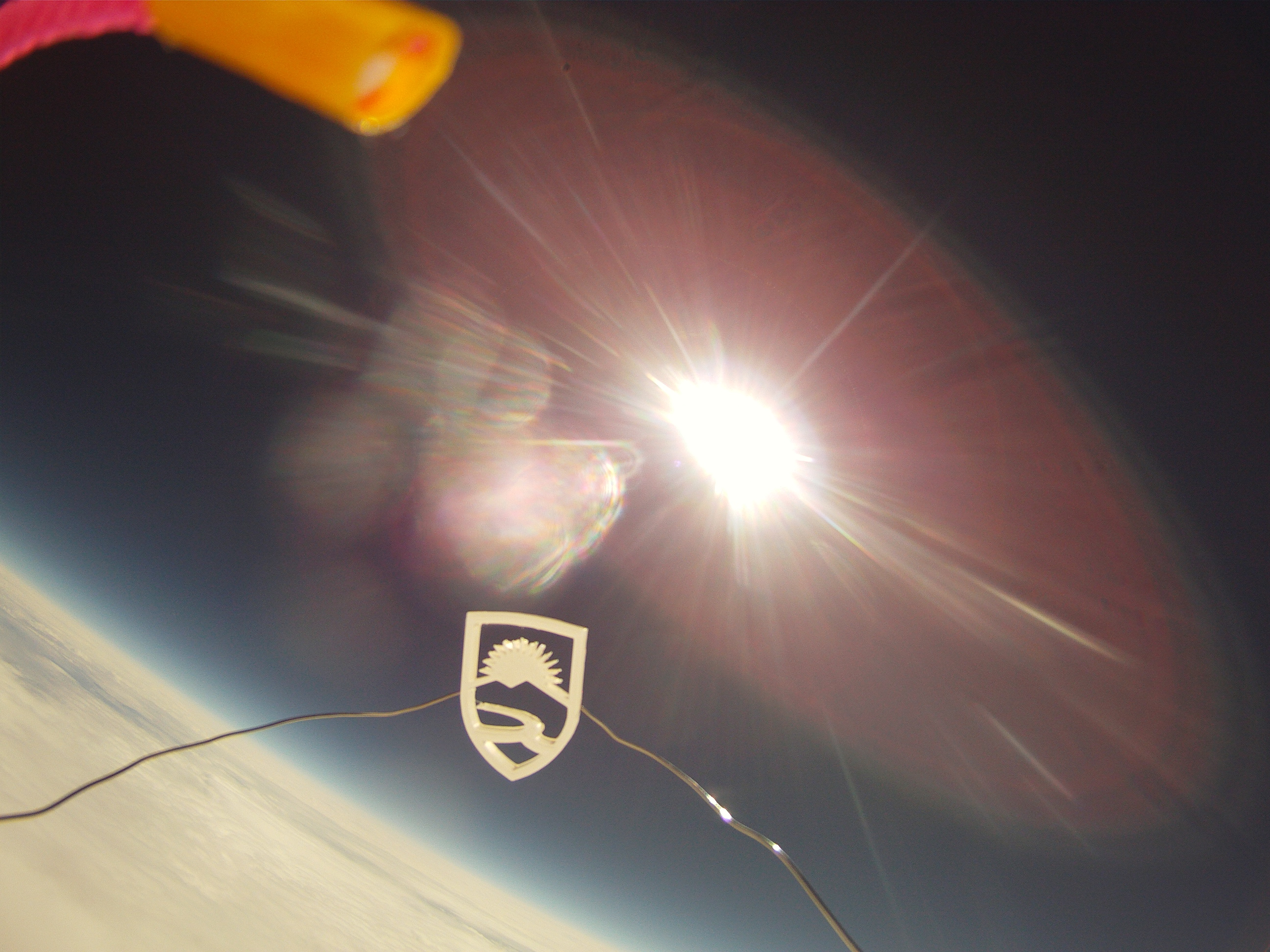If things go according to plan this fall, a group of physics students will boldly go where no other fall class has gone before.
As a project, the class will launch-and-retrieve a weather balloon, sending it 100,000 feet into the stratosphere and locating it about 100 kilometres away at a pre-determined location and hopefully on the ground. A parachute will deploy to bring the balloon safely to earth. Using weather data, electronics, transmitters, sensors, GPS and an on-board camera, students will gain context and meaning to what they are learning in textbooks, lectures and seminars.
“Students will learn electronic design, fundamentals of measurements like calibrations, and that science can be a slow process with lots of trial and error along the way,” said Mark Paetkau, a physics faculty member who along with fellow physics faculty member Normand Fortier, will oversee the fall flight just as they did in the spring when a combination of 20 current and former students did the same.
“They will also learn about the thrill of creating scientific instruments and then letting them go,” said Paetkau. “There is something very exciting about creating and then sending a device to 100,000 feet.”
With the balloon and payload following Transport Canada guidelines for unmanned aircraft and a small package, no approvals have been needed to date, which means one less obstacle for the mission.
Physics courses offered at TRU
The recent spring flight was the third for the physics program since 2012 and was “the smoothest so far,” said Paetkau, even with the hiccups of a transmitter losing power and cutting out with a receiver and the wind blowing the balloon to Barnhartvale rather than the intended destination of Goose Lake.
“After each flight we have an extensive debrief and despite our flight predictions being wrong, the launch, chase and recovery were very well executed. We launched at 10 a.m. and had the balloon recovered by 3 p.m.,” said Paetkau.
Careers using this experience
Skills in projects like this can lead to numerous careers and among them, aerospace, business, computing science, engineering, geography, geology, meteorology, robotics and technology.
The spring flight’s team of current and former students
Jerin Roberts (alumni) – mission control
Owen Paetkau (Fourth-year physics co-op) – launch (and payload)
Kurtis Manke (Fourth-year physics co-op) – mission control and recovery (and payload)

Sun flare creates a dramatic effect.
Payload electronics design and creation
Martin Brumwell
Omar Elmore
Linxiang Ji
Kurtis Manke
Branden Messmer
Owen Paetkau
Zachary T. Parsons
Austin Woolverton
Kael A. Kristjanson
Mohammad (Hessan) Mahbobi-Azgomi
Yuting Pan
Hanzhong Tan
Kenneth Theodore
Robert Thompson

